
Most Recent Visit: June 2016
The Spanish town of Llíria lies about 25 kilometers to the northwest of Valencia. This area was probably originally settled by the Edetani tribe in the 6th century BCE as part of a larger area of control. The originally settlement of the Edetani, the town of Edeta, was located on a hill above the modern city, some remains of which can still be seen, which date to the 3rd or 2nd century BCE. The town of Edeta was the capital of the Edetani people and the home of the Iberian chieftain Edecon, who is mentioned by Livy as being important among the Iberians and friendly towards the Roman fight against Carthaginian power in Spain during the Second Punic War. Polybius elaborates a little more, naming him as Edeco, and states that Edeco was the first of the Iberians to come to Scipio at Tarraco in 209 BCE and offer alliance with the Romans, and that the positive interaction between Edeco and Scipio galvanized other tribes to abandon their support of the Carthaginians in favor of the Romans.
In the 1st century BCE, while owing to Roman influence, but still considered Iberian, the settlement was moved off the hill and down into the river plain of the Turia. During the time of Augustus, Edeta was granted municipium. The town apparently expanded to an area of about 20,000 square meters at its height, but declined in the late empire and was uninhabited for a period until reoccupation during the Visigoth period. There do not seem to be any literary mentions of Edeta, other than the accounts of Livy and Polybius during the Second Punic War.
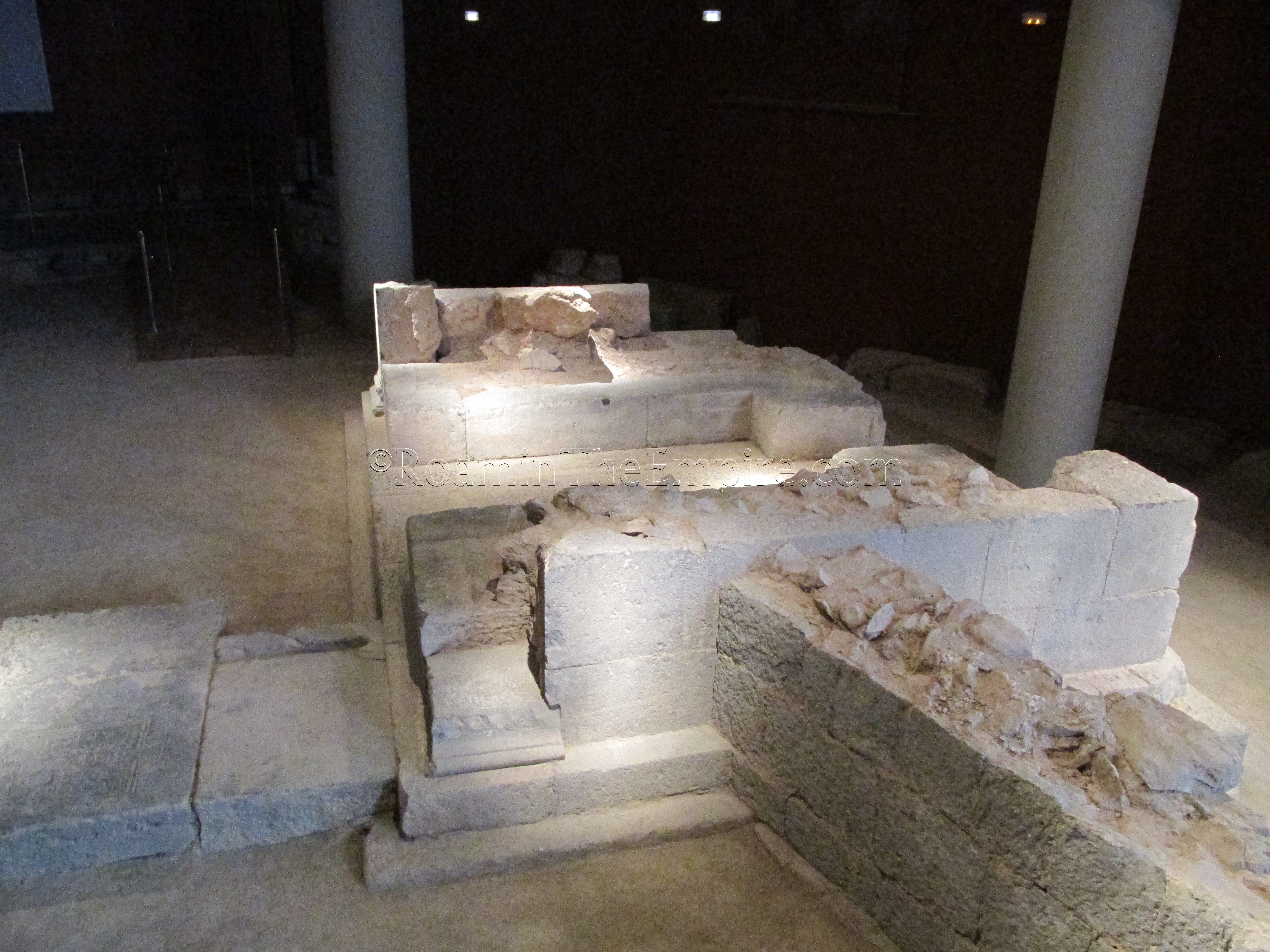
Getting There: Getting to Llíria is best done from Valencia, which is a fairly large city and easily reachable from most places in Spain. From Valencia, it is about a 51 minute metro ride. The metro line 2, typically color coded in pink, terminates in Llíria. The most centrally located stop to pick up the metro line in Valencia is Placa Espanya, which is about four blocks west of the main train station, Estació del Nord. Aside from the first train at 5:16 and the last train at 22:22, it leaves at seven past the hour, every hour. Return trains leave Llíria at nine or seven past the hour, every hour, starting at 6:09, except for the last train, which returns to Valencia at 22:14. The ride requires an ABC zone fare, which is 2.80 Euro each way or 5.30 Euro round trip. Up to date information can be found here.

There are essentially five Roman things to see of ancient Edeta; two of them with admissions, and none of them taking very much time. If timed right, seeing everything at Llíria only takes a few hours. From the train station, just head out the door, turn right, and then turn left at the street and head up to towards the town (north). This is the first of three streets that essentially run into each other and form the main course through town (Calle de Jan Izquierdo, Calle San Vicente Ferrer, and Carrer del Pla de l’Arc). I could not find an open tourism office, but there are occasional map placards. Unfortunately, the two sites that have admission have rather short hours that don’t overlap very much. It is possible to work it out so that everything flows fairly well, but it does take planning. I got there relatively early to beat the heat with some of the walking around, so, my particular order was a little back and forth, but, I’ll list the sites in the order they’re come across in the town leading from the train station.
Taking Calle de Jan Izquerdo up into the town, one comes to Plaza Mayor, which is in front of the cathedral. The exact directions are a little convoluted, but the Museu Arqueologic De Llíria (MALL) is on the hill behind the cathedral. It’s essentially at the top of the hill, so, it can be reached by simply taking the streets and footpaths that are headed upward. The street to the south of the cathedral is the best starting point, and some streets wind around the hill a little before an upward path presents itself. The museum is, according to one of the town’s websites, open from 10:00 to 14:00 on Monday through Saturday year round. It is closed on Sundays and Mondays in the summer, and on the last Sunday of the month and Mondays in the winter. When I went, however, it wasn’t open until noon, and even at that, they were about 20 minutes late in actually opening it. One of the workers was actually sitting outside with me at noon waiting for the person with the key to get there. So, be aware that the hours are ‘flexible’ to some degree, it seems. It seemed to me that Llíria was quite a bit off the beaten path for tourism, so things like this are probably to be expected. Admission is 1.20 Euro. The address is Calle Trinquet Vell s/n.
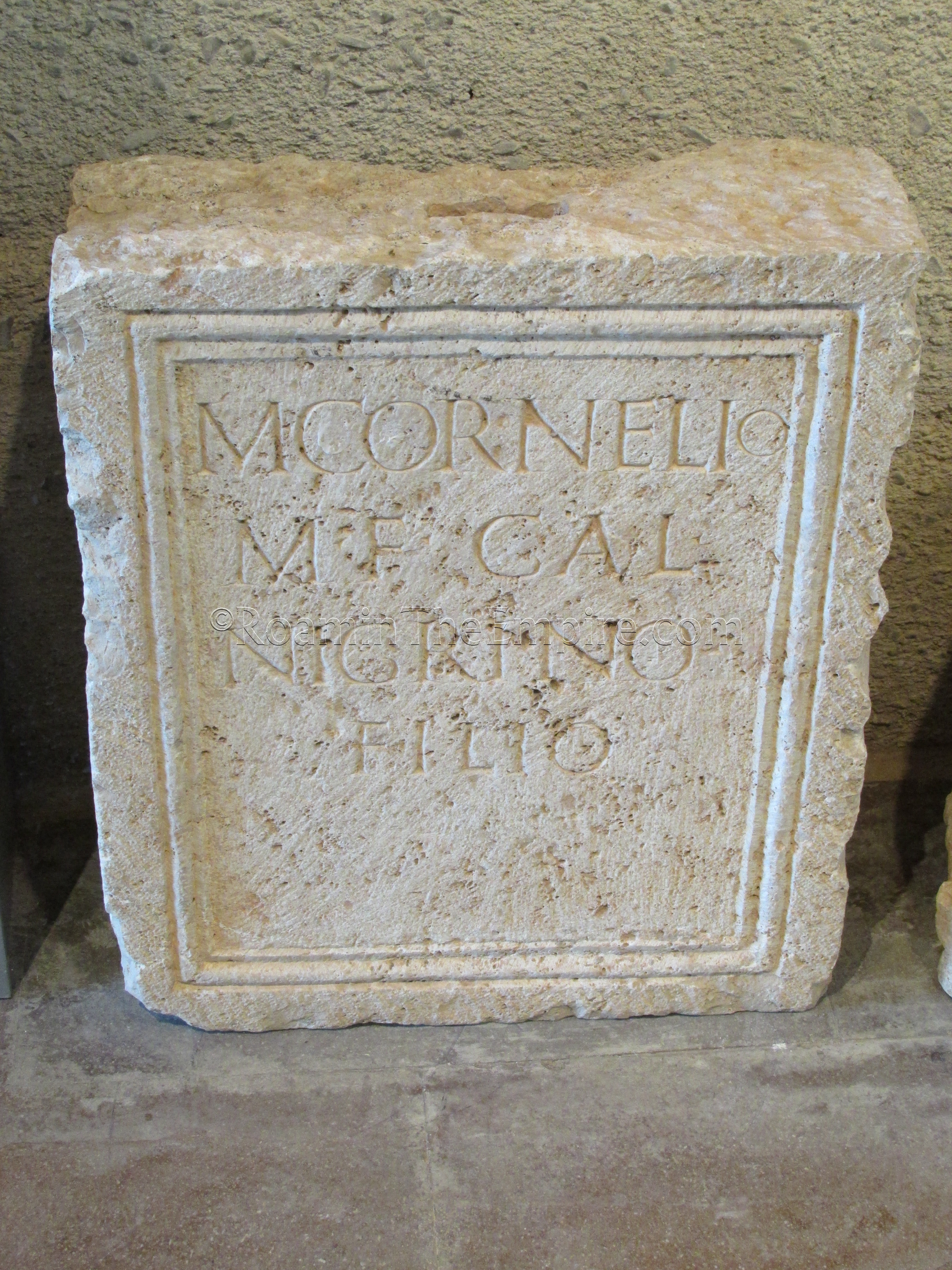
I hate to say that the museum was a disappointment, but it kind of was. Given the amount that has been excavated at Llíria, which is not insignificant, what is displayed in the museum seems a poor representation. One of the most interesting things found from Edeta, the Hercules Mosaic, is displayed at the MAN in Madrid. I understand that this amazing mosaic is displayed in Madrid to reach the widest audience, if it were in Llíria, it might languish in obscurity with very few getting to see it. Though perhaps it would bring in some people to see. In any case, it’s too bad that the town has lost that, as well as probably some of the better artifacts discovered here, to other museums.
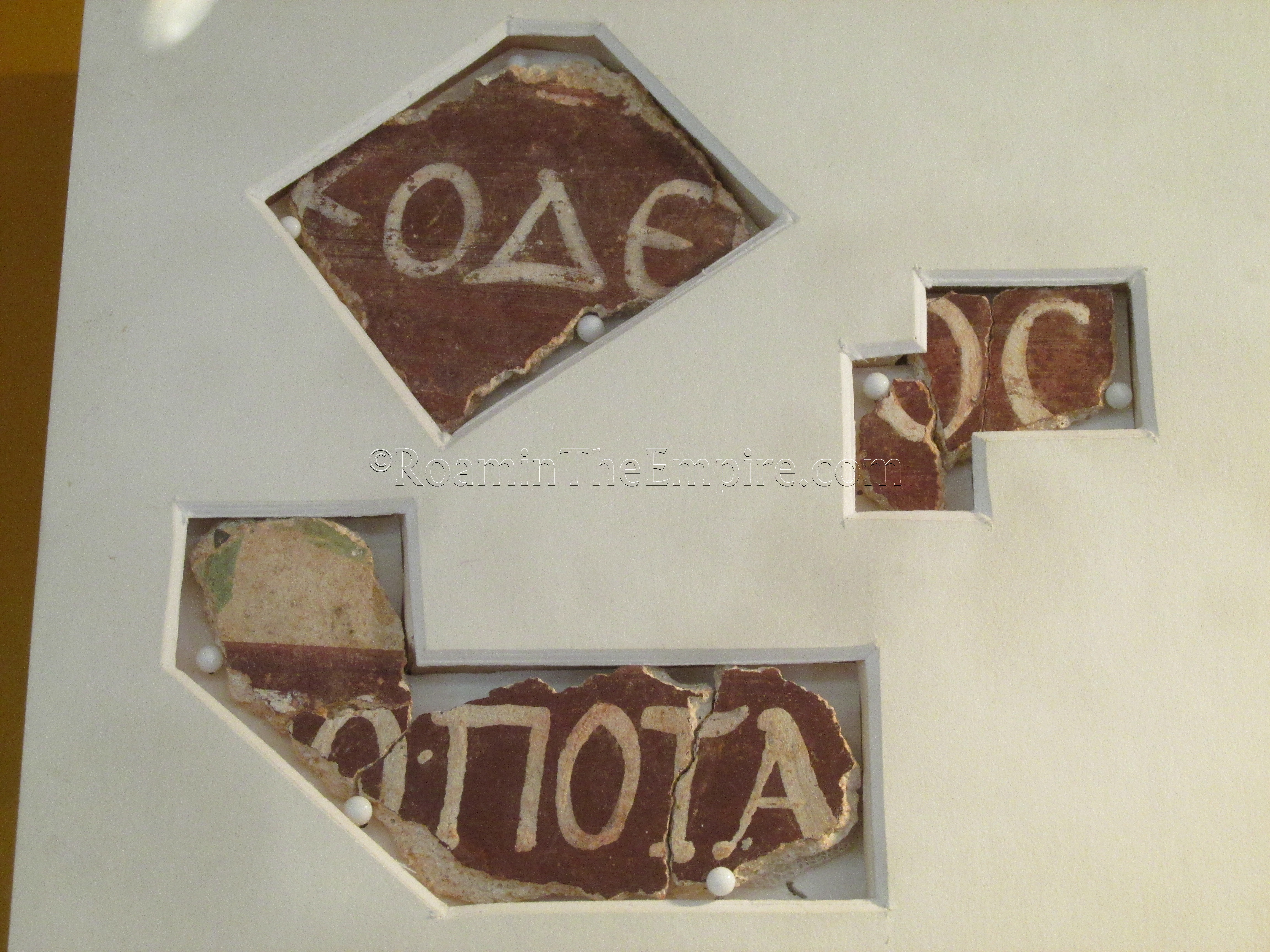
What is at the museum are a few inscriptions, some small statuary fragments, some ceramics, and a few fragments of wall painting; some with painted inscription fragments, which are actually quite interesting. Other than that, though, there isn’t too much here. I’m notoriously slow in museums, and even at the absolute slowest pace I could manage, it took me less than 20 minutes to get through. It’s a nice, new, modern building, and it really is a shame that it doesn’t have a better collection to display here. It’s worth seeing, just because it’s there. But, I wouldn’t break my back to see it if time was short (though, all told, it’s really a half an hour diversion from Plaza Mayor and back).
To get to the next stop, head back down to Plaza Mayor and continue in the previous direction northward. The course of the main thoroughfare is pretty easy to determine, and eventually a tree lined street is reached after a few minutes. Towards the end of this section of the course, on the left, is the Mausoleos Romanos at Calle San Vicente Ferrer 19. This small site is open from 10:00 to 12:00 on Tuesdays through Saturdays and is closed on Sunday and Monday. Admission is free.
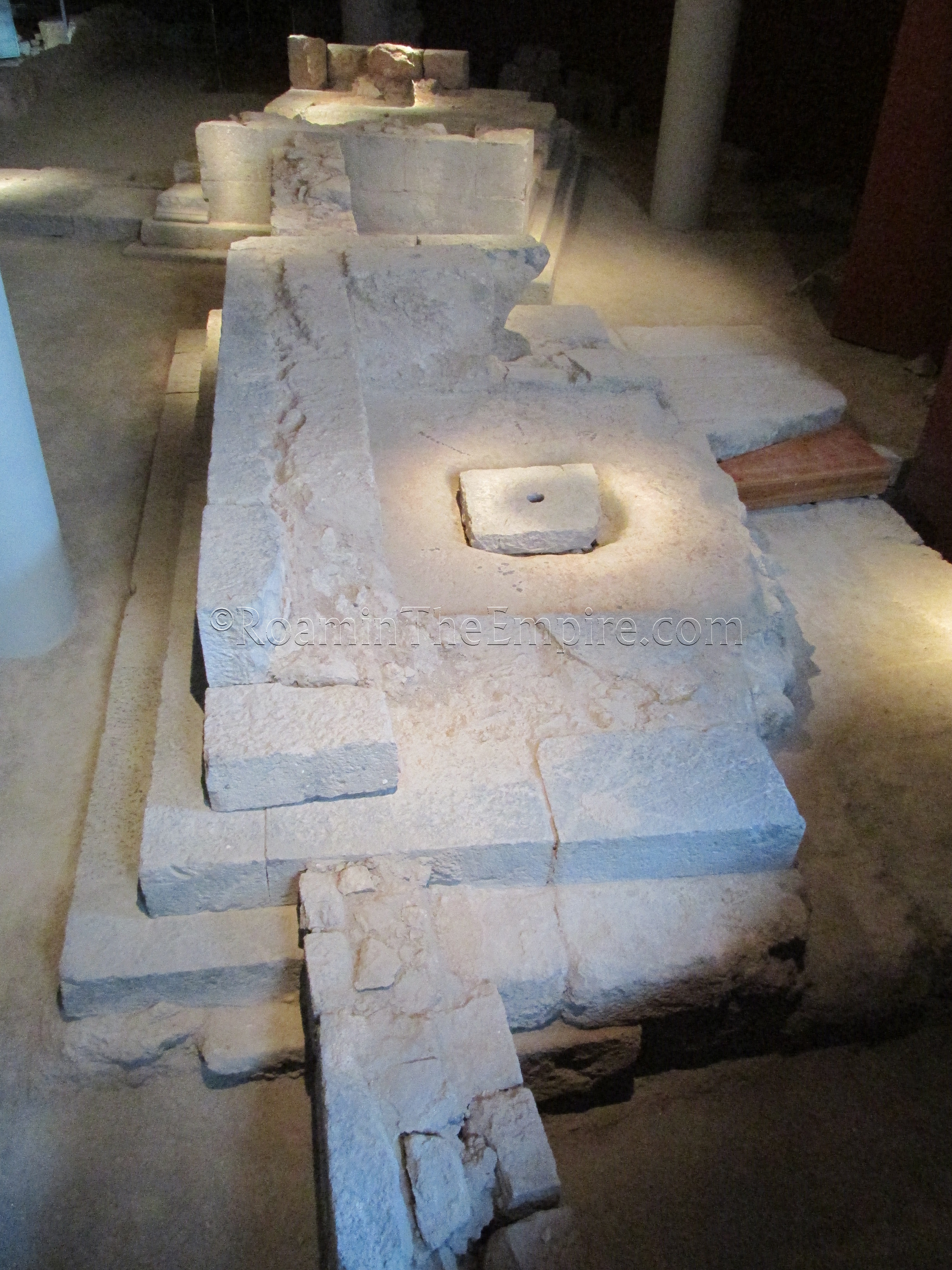
The Mausoleos Romanos consists of portions of two funerary monuments dating to the 1st and 2nd centuries CE. There is a nice model near the entrance that shows a reconstruction of what the tombs and the surrounding area would have looked like, helping greatly to put what remains into a meaningful context. An inscription laid into a threshold of a gate for the monument closest to the door notes that it was built by Publius Clodius Eutychus for himself and his wife, Natalia Clodia. The identity of the second tomb’s occupants are unknown.
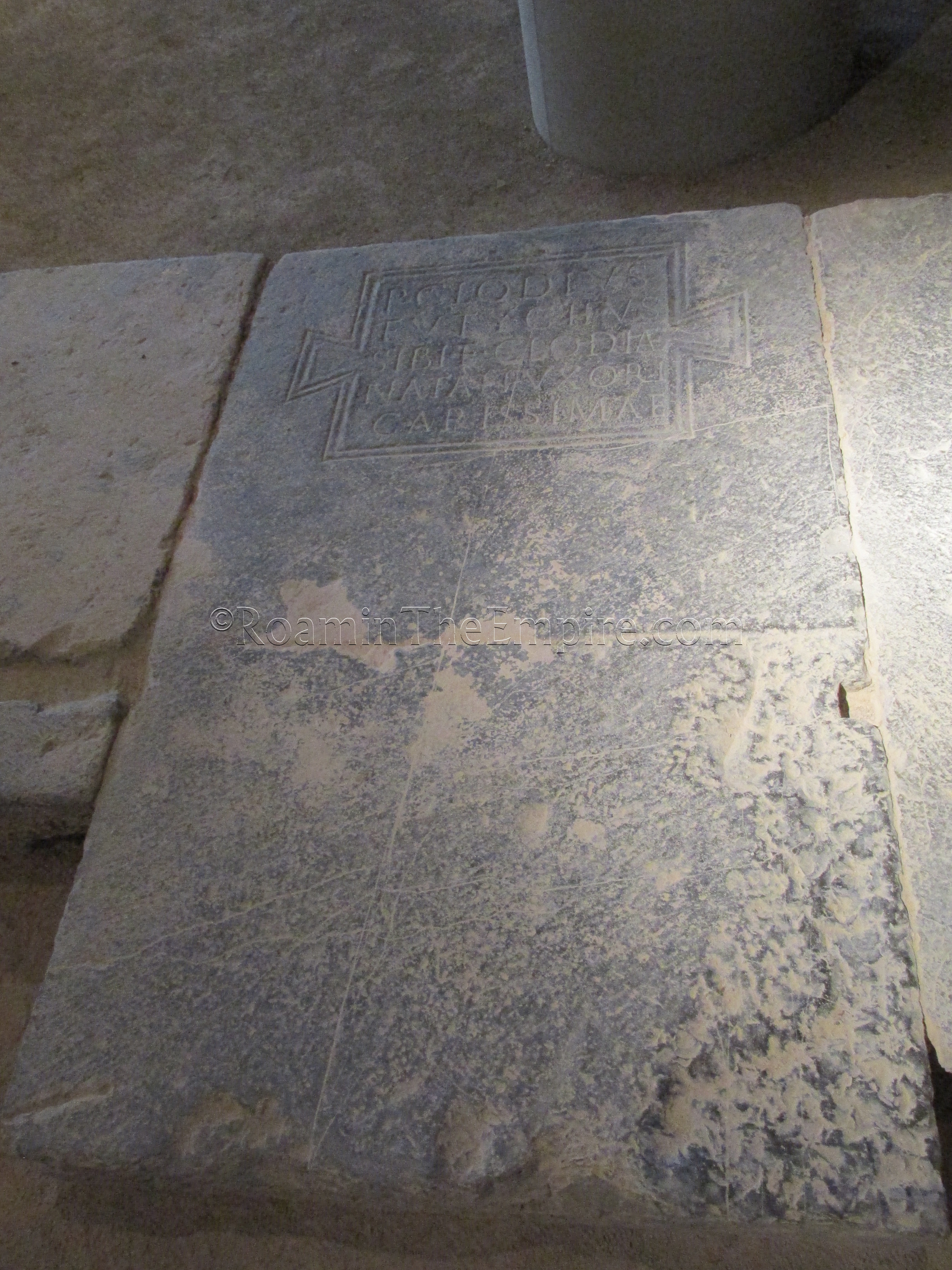
Running along one side of the further tomb is the area of a road that ran through the necropolis, though no paving stones are present. The far tomb includes the remains of some bench seating. The remains of the tomb of Publius Clodius includes a central slab with hole used for pouring libations into the burial chamber below. There are also some unassociated walls in the vicinity that are also preserved.

This is easily the best stop in the town. There isn’t a whole lot here, but it is very well presented. It gives me a lot of hope for the possibility of what could be done with some of the other sites in town that are in various stages of preservation. There’s lots of informative information, though none of it in English. The price can’t be beat, but the window for visitation is pretty small. Make sure to be able to catch it, though.

Exiting and continuing down the road about another 120 meters, on the right side is a large complex of remains, the Termas Romanas de Mura. When I visited, in 2016, these remains were in, what appeared to be, an active state of preservation, ostensibly working toward making them presentable. Of course, ‘active’ is a relative term; there didn’t appear to be anyone presently working, and it didn’t look like anyone had been there very working very recently. There were tools and conservation materials present, though, so, it seemed as though something was at least planned for the near future. There still appeared to be very much work to be done. There is no actual entrance to the site, and it can only be viewed through the fences that surround 3/4ths of the site. The north side of the site backs up against a school, so, it is not possible to get a close view from this side, which is unfortunate, as that side of the site is closest to the main bathing complex that makes up the centerpiece of this area.
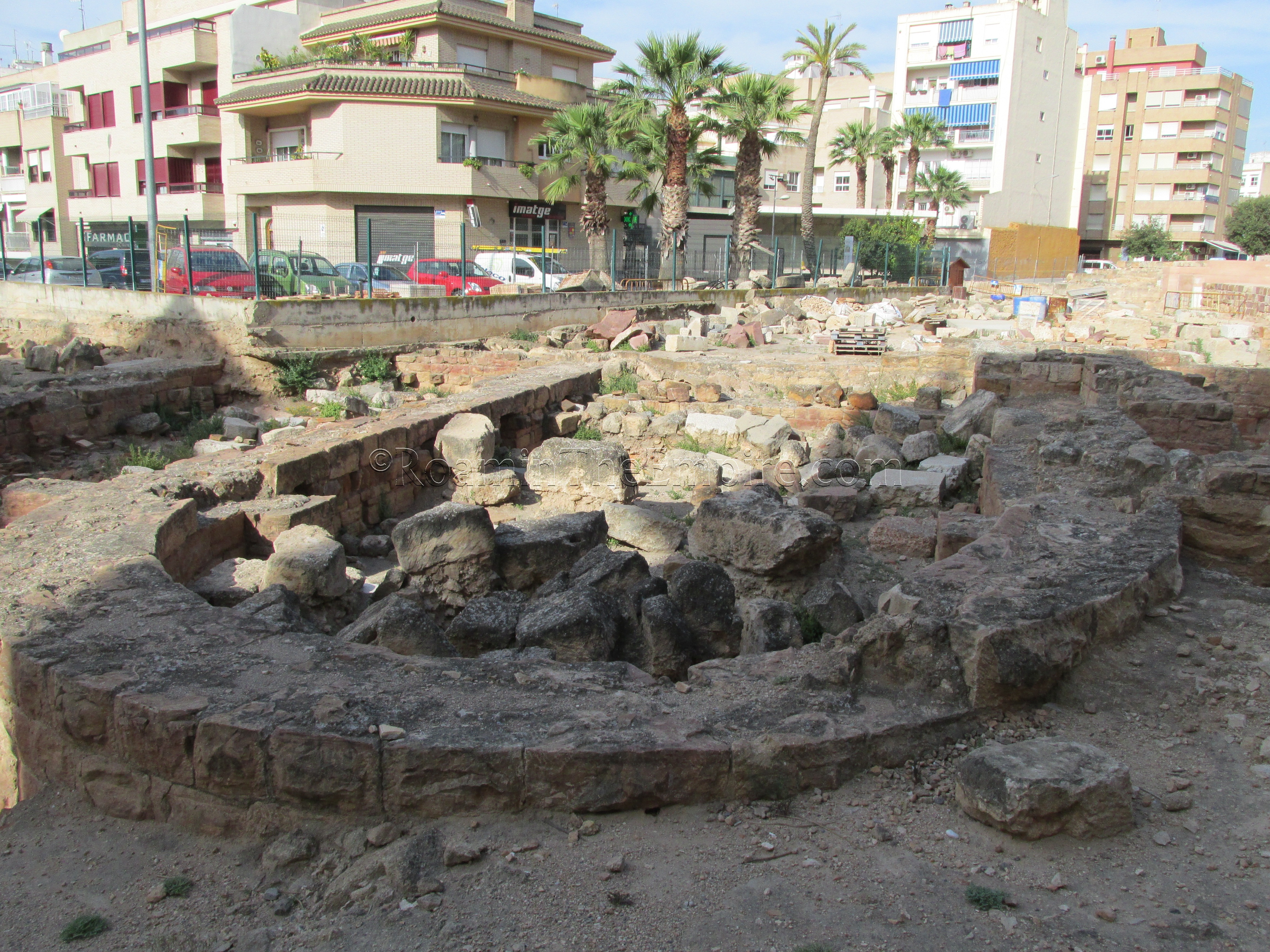
There are essentially three different sections that make up this site. The structures in the western part of the complex, closest to the road you arrived on, are part of a temple of unknown dedication. The central set of structures in the northern part of the site is a bathing complex that, in addition to all of the standard rooms of a bathing complex, also includes a natatio and a basilica thermarum. Finally, the eastern part of the site, in the southern portion, is made up of another bathing complex, possibly reserved for women and somewhat smaller than the other. The large open area, which is littered with various architectural fragments and conservation materials, is identified as a palaestra. A map and a model in the Museu Arqueologic De Llíria help to visualize the structures present here.

Plenty can be seen from beyond the fences, but not especially well. Because of this, it’s quite a quick visit. There’s no information on-site, so any context is impossible to come by unless you are familiar with the structures or have visited the museum first. There is a modern structure to the south, outside of the gated part of the site, which looks like it was, or could be, some sort of on-site interpretive center. There’s a lot of potential here. If it were fixed up in the manner of the Mausoleos Romanos, it would probably be very nice to visit. It’s certainly a long way off from that at this point, though.
Head back out to the road on which you previously arrived on and continue on a short distance past the Termas Romanas de Mura to an intersection and turn right. Follow that road to the roundabout, and on the other side of that roundabout is a large open field with some exposed architecture. This site is in even less a state of preservation as the previous. These, quite literally, seem to be abandoned excavations. There are no fences of any sort. I met a local at the Termas Romanas de Mura, who when he saw I was taking an interest in the ruins there, excitedly wanted to bring me over to show me these. I knew they were there, but, he was so excited (again, probably because not many English speaking tourists make it this way) to show me, I was happy to let him. According to him, illegal excavations take place in the field, as there is absolutely no security measures or oversight. There were obviously systematic excavations there at some point, possibly even within the past five years.

It goes without saying, that there was absolutely no information about this site there, and I can’t seem to find any information on the excavations at all. They certainly aren’t addressed in the museum. Whether these are even completely Roman is probably debatable. They could very well be from a later period, or perhaps even earlier, though I saw some things that might be Roman. Again, there is no security here, so it is conceivable to just hop down into the field and go exploring, but, I decided that might not be a great course of action, as it was the middle of the day and next to a fairly busy street. Much of it was quite overgrown in parts, as well. There’s not much else to say about it, other than it is there and there are discernible structures present, though I had no luck in being able to identify any of them.
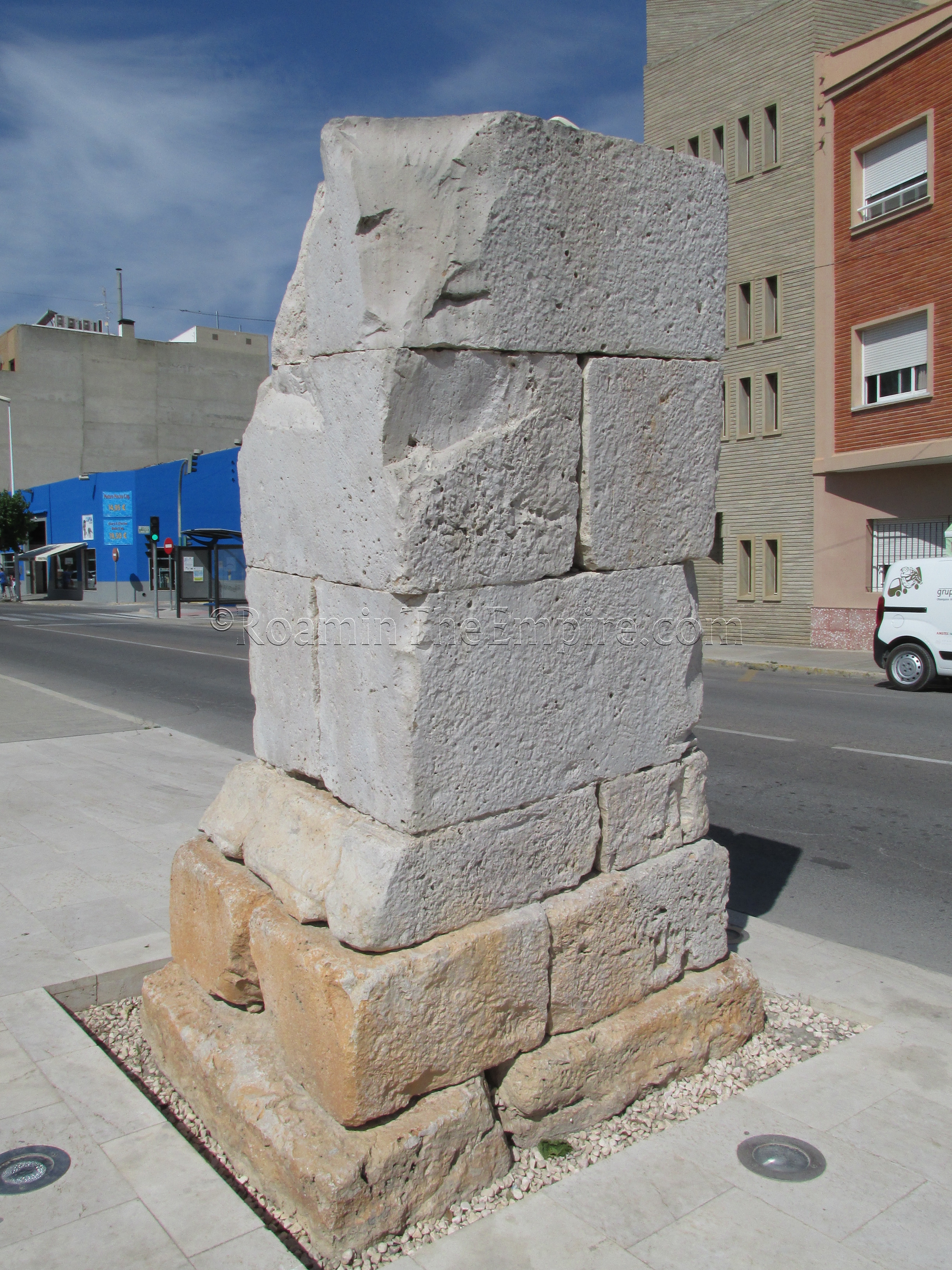
The road that runs along these ruins, Carrer del Cronista Domingo Uriel, runs parallel to Carrer del Pla de l’Arc, so to get back to it, just take one of the two roads that runs directly away from the field, and the next street will be Carrer del Pla de l’Arc. Continue following this to the north/northeast for about 330 meters. At this point, on the right side of the road, between the road and a park are the remains of an arch. This seems to have just been a monumental portal of some sort, possibly marking access to a public space, and is dated to the 1st century CE.
There are also the remains of some of the original Iberian settlement on a hill to the west of the city, below the Real Monasterio de San Miguel de Llíria. It’s actually also visible on the side of the hill from the train station. Unfortunately, I didn’t have time to make it out to those remains, as I was trying to get back into Valencia to see the Prehistory Museum.
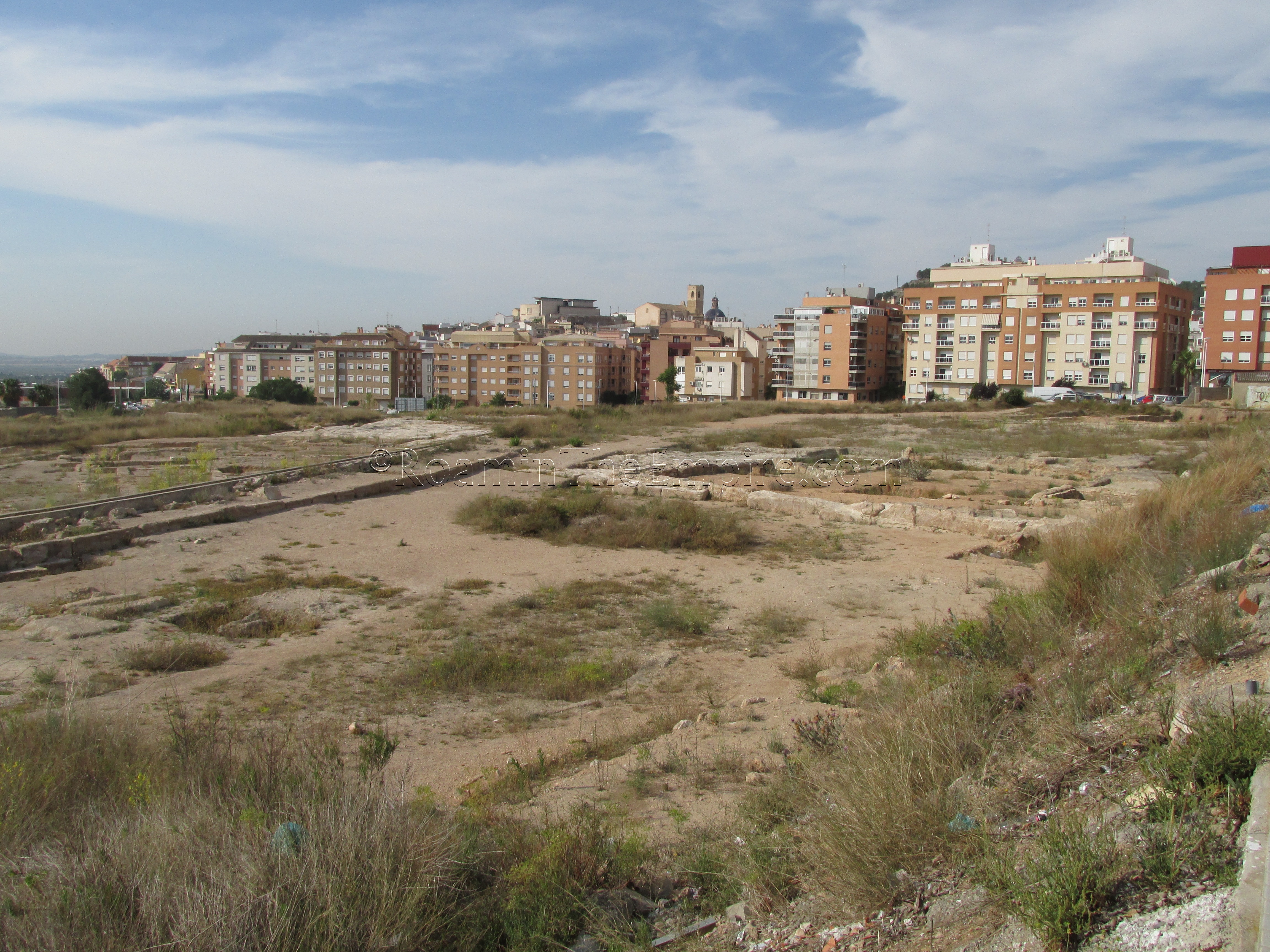
Overall, Edeta is a nice trip off the beaten path. When the Termas Romanas de Mura are eventually made ready for tourist visit, it’ll be quite a nice stop. As it is, it’s easy to see in a few hours if you time the museum and tomb entrances right. It’ll certainly appeal to completists like myself, but the trip out and the current lack of anything very spectacular might deter some. Part of the reason I do this blog is to highlight lesser known sites like this, though, that might not be on the radar of even avid fans of archaeology. To me, however, it was very much worth the trip!
Sources:
Bonet-Rosado, Helena, and Consuelo Mata-Parreno. “Who Lives There? Settlements, Houses and Households in Iberia.” The Cambridge Prehistory of the Bronze and Iron Age Mediterranean, Cambridge University Press, New York, NY, 2014, pp. 471–487.
Lalli, Carlo, et al. “Reconocimiento de los Compontentes Fisco-Quimicos de las Pinturas Murales Romanas del Santuario y Termas de Edeta Valencia.” Arche, no. 5-6, 2010, pp. 37–44.
Livy, Histories, 27.17.
Polybius, Ab Urbe Condita, 10.34-35.
Richardson, Eitan P, et al. “Extracting Scar and Ridge Features from 3D-Scanned Lithic Artifacts.” Amsterdam Univ. Press, Archaeology in the digital era: papers from the 40th Annual Conference of Computer Applications and Quantitative Methods in Archaeology (CAA), Southampton, 26 – 29 March 2012, 2013, pp. 83–176.


